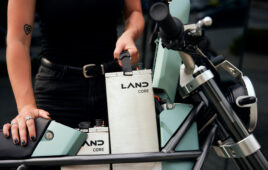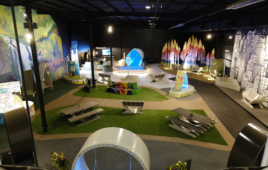The High Performance Wireless Research and Education Network (HPWREN) began in 2000 with the objective of connecting remote science sites to a high-speed network. Today, the wireless network covers nearly 20,000 square miles in San Diego, Riverside, and Imperial counties in Southern California.

An HPWREN automated digital camera on Lyons Peak, California captured an image that shows the extent of the Horse Fire. The remote camera collected many images which researchers were able to use to better understand the wildfire. Photo courtesy of HPWREN.
The network includes backbone nodes located at the University of California at San Diego and San Diego State University campuses in addition to those in remote environments. It spans horizontally from San Clemente Island to near the Arizona border and vertically from the Mexican border to the Joshua Tree National Park, with its longest link spanning 72 miles.
These nodes consist of antennas which can be as large as 10-ft in diameter and weigh almost 400 lbs. These antennas connect to radios, radios connect to the local router, and the backbone sites then connect to HPWREN user sites. Researchers and others use the network to study and analyze quality-of-service, policy-based routing, and systems integration to guide the performance and efficiency of the network. But, in addition to those network-analysis aspects, HPWREN is a collaborative cyber-infrastructure for research, education, and first responder activities in remote locations.
For instance, the wireless network lets scientists in such fields as environmental sciences, astronomy, and oceanography share real-time data with applications that include wildfire communications, remote research, remote environmental sensing, distance education, and virtual exploration. Users also turn to HPWREN as a test bed to develop real-time data delivery systems for seismic networks, ocean observing systems, and measuring earth crust movements through the Plate Boundary Observatory.
Most recently, HPWREN assisted the National Park Service in Santa Monica Mountains National Recreation Area in installing a web camera and wireless connection in the Santa Monica Mountains. The camera will serve both educational and public service objectives by monitoring fires and providing data for a fire behavior model currently in development.
The network also supported a scientist from England’s University of Bath in setting up magnetic field sensors and a data logger at Pinon Flat Observatory in California to study sprites, a type of transient luminous event (electrical discharges) that occur above thunderstorm clouds and create visual flickers in the sky. The unit at Pinon will be the first fully operational station of four around the world and takes advantage of HPWREN’s capabilities – ideal locations for sprite detection are often remote and far from main electricity sources.
HPWREN
www.hpwren.ucsd.edu
::Design World::
Filed Under: CONNECTIVITY • fieldbuses • networks, Green engineering • renewable energy • sustainability, Wireless • 5G and more





Tell Us What You Think!